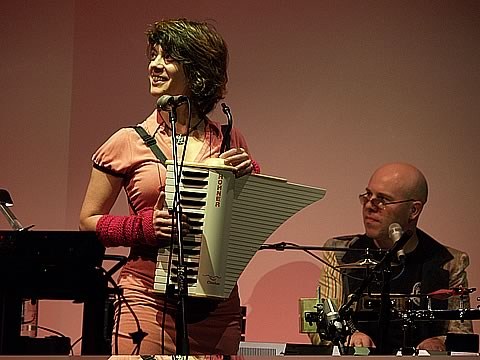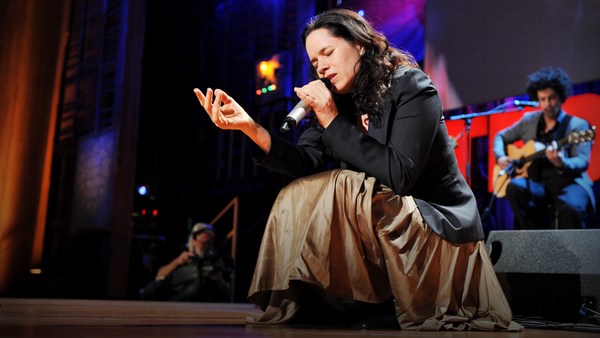I have to tell you all a secret, it’s that there are so many people in this world with the misfortune of not having had the pleasure of visiting the León Cathedral. You all are fortunate because I’m sure that most of you have indeed seen it. If I were to ask you all who’ve had the pleasure of visiting the León Cathedral and others who haven’t yet been able to visit, but can see pictures like those which we’re seeing right now, if I were to ask you all what the artistic style of this building is, you wouldn’t have any doubt. This is clearly an example of Gothic art. And you all know that this is a clear example of Gothic art because there is a single distinctive element, unique to this style that dominates the cathedral, which is the ogival arch, this pointed arch that you can see in this image. It’s very easy, then, every time you see ogival arches, you’re looking at works of Gothic art, or not? Because what can happen is what we’re looking at right now, that there are a bunch of ogival arches, but this isn’t a Gothic building. What’s more, it was made first three centuries before they started making those Gothic cathedrals in Europe. This is the mosque of Ahmad ibn Ţūlūn in ninth century Cairo. And here we have that discrepancy between what the textbooks tell us every time that you have an ogival arch: this Gothic style and that which shows us reality. Let’s look at more examples. Here we can see the Royal Monastery of the Real Incarnation of Madrid, a nunnery from the early 17th century, that in books is labeled as Baroque. Also Baroque is this other more famous building. The façade in the Plaza del Obradoiro, of the Santiago de Compostela Cathedral which is also considered Baroque. You’ll tell me if this one has more, more embellishment, more decoration, this one does remind me of another that was explained to me in books as being Baroque. While conversely... Let’s look - let’s see if we can get it to appear - this next image. This is La Merced Church in Guatemala City. This one, in textbooks, appears as Neoclassical, as well as this next one, the Madeleine of Paris; this also appears as Neoclassical. You can see, between Madeleine of Paris and La Merced of Guatemala, there are some differences. Are you going to question what the books say? Are you going to say that books are wrong when they categorize both La Merced and the Madeleine as Neoclassical? Are you going to say that reality contradicts the books? How dare you? Since when do you dare to contradict what the history books say? Everything is already written in those books. Don’t look at reality. It can’t be that books can be wrong. I’ll give you another exercise. If I had the chance to ask you, and you answered me out loud, what about this one? Under which style would you categorize it? With all of this gold, this decoration that defies architecture with this ornate ceiling. You would tell me now, I’m very certain, that this is Baroque. But no! The books say that this is Renaissance; it’s the ballroom of the Fontainebleau Palace of Francisco I in the 16th century. Because the problem that we have when studying history, and not only art history, is that we tend to study history through records, taxonomies, labels. And it seems that if we put a label on the historical reality we’re analyzing, we’ll know everything. It seems that if we look at a building like the León Cathedral and we say that it’s Gothic, we’ve answered all of our questions. And remember, I insist, not only in art history, but history in general. We love labels, and remember, labels are what our books tell us. Reality can tell us something very different. Let’s return to León. Here we are in the crypt of the Collegiate of San Isidoro, which, again, the majority of you are fortunate to have visited. Look at these drawings. It’s clear that they’re not particularly Naturalist, that the artist who painted these little shepherds intended that we’d understand that they’re people, but that they’re not real people. What do the books tell us about this? The books tell us that from the fall of the Western Roman Empire in the 5th century until the return of the classical world, which vanished in that 5th century, in the 15th century, in the Florentine Quattrocento, artists forgot how to make realist art, naturalist art, where works of art are as close as possible to reality. We’ve all studied this and we’ve said, “Well, it’s true.” The Romans watched as their empire disappeared, ten centuries of darkness in the medieval period and finally, in the Renaissance, they regained this. You’re realizing what we’ve studied, what we’ve learned for years and years. Do you realize what I’ve just told you? I’ve just told you that for almost a thousand years, forty generations of artists were a bunch of idiots. Forty generations of artists were incapable of representing reality in a naturalist way. The artist and his father and his grandfather and his great-grandfather and his great-great-grandfather, his great-great-grandfather, and the great-great-grandfather of his great-great-grandfather, and so on, up to forty generations, were idiots. Do you believe this is possible? Can you imagine that there were 40 generations of human beings incapable of being original, innovators, of developing new ideas? Can you imagine that all of you, none of you would have even one single new idea? Not you, not your children, nor your grandchildren nor your great-great-grandchildren and their great-great-grandchildren. This is what they tell us when they say that here is a clear example that with the disappearance of the Roman Empire, inevitably these people were so dumb, for 40 generations, that they weren’t able to create something naturalist again. It’s not like that. Here, we have a whole debate when Christianity becomes official in the 4th century, they want to represent their gods or their God or their saints in a different way than pagan gods. They don’t want people to get it wrong; they want it very clear. Look, this is the Christian God. And if necessary, we can even make figurativism completely disappear. What we have here are a few theologians, who are saying: Everyone, we’re going to make images different than those of the pagan gods. For some sponsors, which can be popes, princes, counts, paying to ensure that these images, in effect, don’t look like pagan gods. And finally, for a public who we want to avoid falling into idolatry, and that understand very clearly that these aren’t the real gods, that because they aren’t realist, because these images aren’t naturalist, we see clearly that God isn’t there, that the Virgin isn’t there, the saints aren’t there. There are some drawings that portray all this. Clearly, I’m not here saying this type of nonsense, of how the classical world disappeared, everything went to hell and for a thousand years nobody knew how to say anything. No, I’m talking to you about the people that made this art throughout those ten centuries, who were very clear about who was sponsoring this art and to whom it was directed. And what’s more, if in any given moment there was some sponsor that wanted to make something figurative and realist, it could happen. Looking at this image, you’d say that this depicts the 15th century, the age of the Renaissance. Well, maybe the people in the age of Verrocchio; Michelangelo hadn’t yet come, but look at this pretty image. I mean what a great Adam, so proportional, so canonical, even with movement with the curvature of the body. These people know what they’re doing. This is from 1260. Who would have imagined that a Gothic artist, a Gothic sculptor of the so-called Gothics could sculpt as well as a sculptor of the so-called Renaissance. This is in the Museum of Cluny, in Paris. Originally it was in Notre Dame Cathedral, but it’s now in the museum. Why? Because it’s very clear here that there are artists capable of representing reality just as it is. Especially when there’s someone who pays the artist to do something like this, and when there’s a public that can receive it without any issues of idolatry or the like. Or maybe if there is this issue, we can exclude most of the public, and it will be for the personal enjoyment of whomever paid for the sculpture. What we have to understand with what I’m telling you so far is that it doesn’t matter to me if it’s art history, as I was telling you a moment ago, or history in general. We have to be capable of understanding the history we’re taught; and we should learn history by smashing typologies, smashing prescriptions, smashing labels. And what I’m getting at here is that it doesn’t matter to me if the label is Romanesque, Gothic, Renaissance, Mannerism, Baroque, Rococo, Neoclassical. Or if the label is social class, or if the label is nation, all these types of ideological constructs that group a ton of people, leading indviduals to disapper and leaving us with a mass, or if you want, let’s put it in the contemporary world. What does the label Cuñao mean? What does the label Charo mean? What does the label Cayetano mean? It seems that it’s very clear. But we run the risk of, having placed the label, we already know that history is speaking to us, and no, we have to study people, study people, not those maximalist categories. And with this, I want you to understand something. Historians aren’t committed to recovering established traditions in the face of novelty, because what can happen is that suddenly we discover the more raging modernity made tons of centuries ago. Like for example, this marvelous retrochoir of Santo Domingo de la Calzada, with such Picassian features. Ultimately, what we have to understand is that if we are taught history and we learn it incorrectly, we will construct our present-day life on a foundation that will sink. With that, I invite you to try to study not the history of labels, not the history of taxonomy, not the history of styles, of classes or nations, but the history of people; because if you do it this way, not only will you be creating an accurate history, you will be authentic owners of your present. Thank you.

